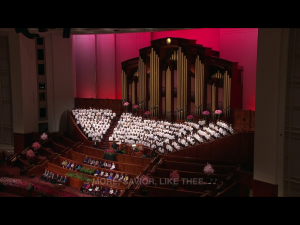Another week, another false claim about the Church of Jesus Christ of Latter-day Saints.
You may have seen this post or a meme related to it. The title claims that the Church “endorsed” socialism based on a little-read priesthood manual from 1939. Farther down in the post, the author implies that President Heber J. Grant himself “advocated for” socialism.
Let us be very, very clear: as I point out in this post, nearly every LDS prophet, including President Grant, has spoken out against systems of government-based charity. What the Church favors is voluntary, personal charity.
But let me go further: the Church was vehemently opposed to government-based welfare programs during the 1930s and reformed its own welfare system to encourage 1)more voluntary charity by latter-day Saints and 2)a private system of giving and receiving that would emphasize self-reliance.
As many readers may know, in the 1930s, most Mormons lived in the inter-mountain West. That area suffered greatly during the Great Depression. In response, the federal government and state governments set up public assistance programs. The Church was unwaveringly opposed to these programs, which they felt encouraged idleness and dependence. The Church emphasizes thrift and self-reliance, instead of what it called “the evils of the dole.” (“Dole” is a word that was used in the 1930s to refer to public welfare programs).
In General Conference in 1933, President Grant said he was worried that latter-day Saints were succumbing to what the Brethren called the “dole mentality.”
Many people have said….’Well, others are getting some (government relief), why should not I get some of it?’ I believe there is a growing disposition among the people to try to get something from the government of the United States with little hope of every paying it back. I think this is all wrong.” (Source: Conference report, Oct. 1933, p. 5).
Continue reading →

 In 2000, a British judge found Deborah Lipstadt innocent of libel with respect to her book, Denying the Holocaust. The movie Denial, now in post-production, documents the real-life court battle between Holocaust-denier David Irving (played by Timothy Spall) and Professor Lipstadt (played by Rachel Weisz, pictured). Directed by Oscar-nominee Mick Jackson and based on the book Deborah Lipstadt wrote about the trial, the movie may be expected to emphasize the difference between conscientious or objective historical research and “histories” that knowingly and “deliberately mis-represent or manipulate historical evidence.”
In 2000, a British judge found Deborah Lipstadt innocent of libel with respect to her book, Denying the Holocaust. The movie Denial, now in post-production, documents the real-life court battle between Holocaust-denier David Irving (played by Timothy Spall) and Professor Lipstadt (played by Rachel Weisz, pictured). Directed by Oscar-nominee Mick Jackson and based on the book Deborah Lipstadt wrote about the trial, the movie may be expected to emphasize the difference between conscientious or objective historical research and “histories” that knowingly and “deliberately mis-represent or manipulate historical evidence.”
